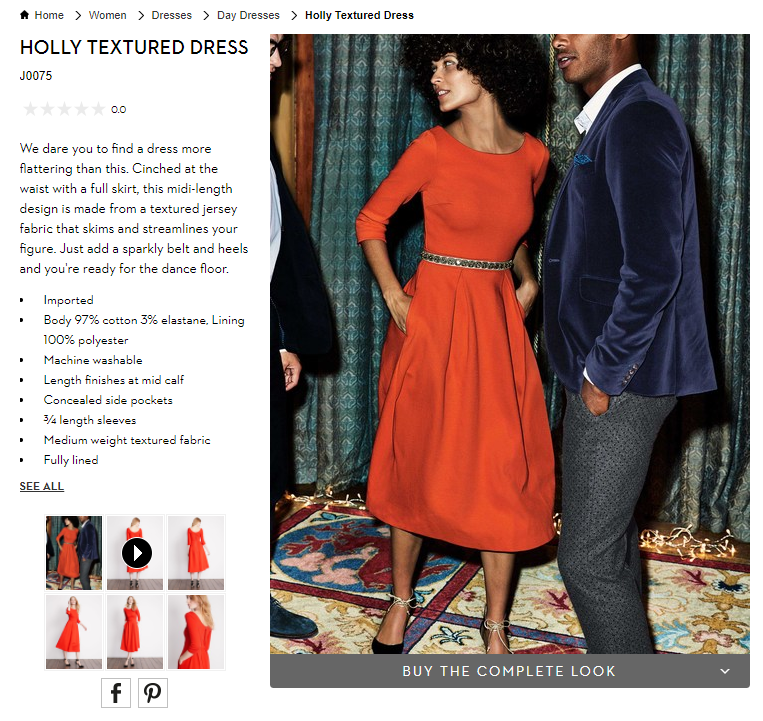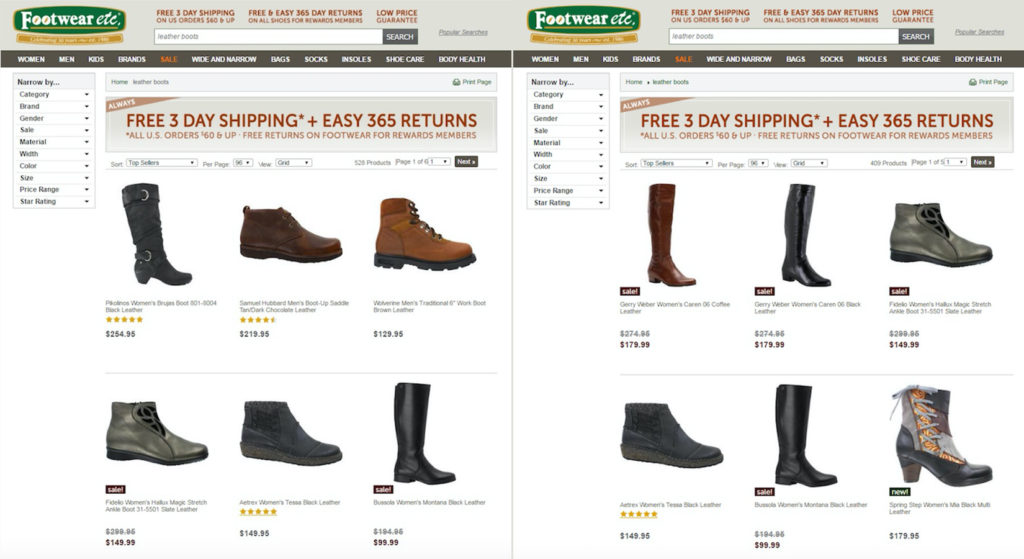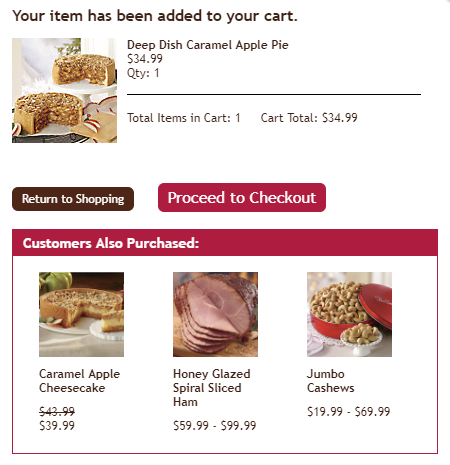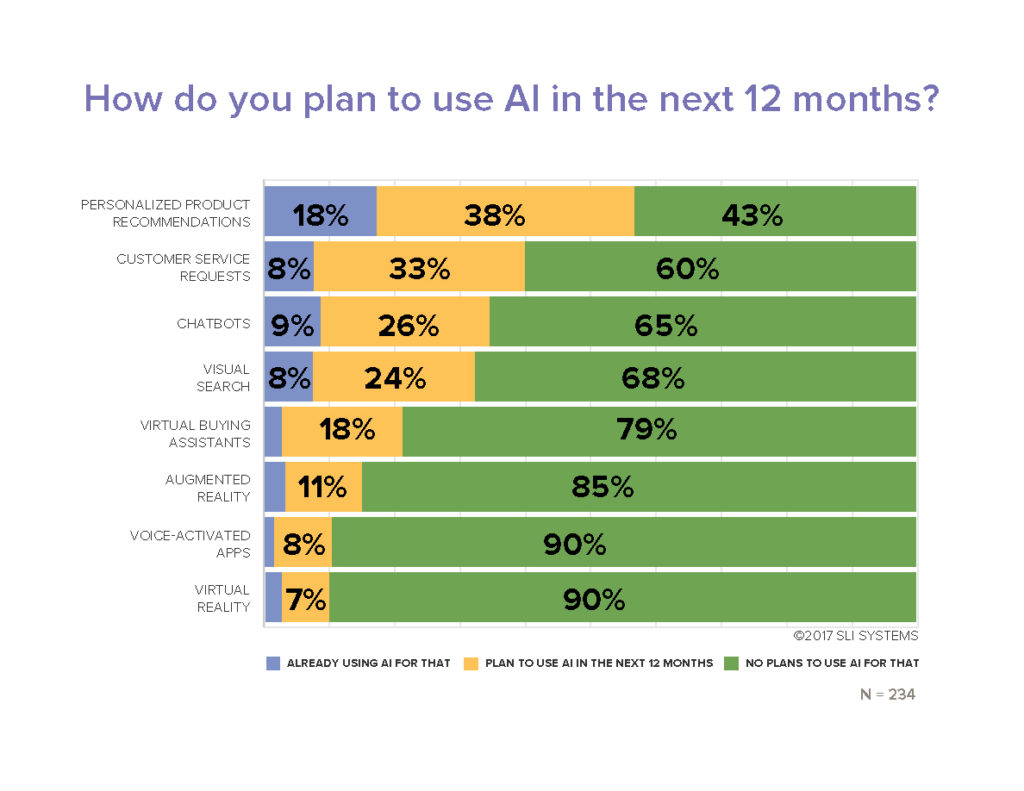E-commerce merchandising has one goal in mind – connect shoppers with the right product so that they “Add to Cart” fast. Merchandise well and you’ll increase conversion rates and boost your average order values.
But execution is always incredibly difficult.
You have different visitors with different mindsets toward actually buying. Those shoppers are engaging with different parts of your website through their shopping journey.
On top of that, you have to wrangle massive SKU quantities, constant product and pricing changes, and frequent promotions.
E-commerce merchandising is complex.
It is no longer as simple as choosing the products you want to move, setting an attractive discount, and plastering the offer all over your valuable real-estate.
You need to figure out what each shopper is most likely to buy right then.
The leading retail brands are employing the newest e-commerce merchandising techniques to successfully unlock the complex code to winning more sales. They approach effective merchandising along three dimensions:
- Understanding different customers need different merchandising strategies
- Deploying the right techniques along the shopping journey
- Delivering the right product that is most likely to be purchased
Plus, they’re using data to drive that complex decision at scale. And you can too.
Let’s breakdown what you can do to optimize these three elements… and dramatically increase your sales.
Customer-Focused E-commerce Merchandising Strategies
“Traditional” merchandisers that worked for brick-and-mortar retail stores often had a pure product buying background. They would master the data. But that mastery focused inward to the business for the purpose of increasing unit volumes, maximizing margins, and avoiding too much unsold inventory.
Yes. You still need to successfully manage your product buying to be profitable through your online channel. But you also need to understand what’s pulling through those sales and why.
Today, world-class merchandisers start from a different perspective. They think about the customer first. Then they apply their product expertise and merchandising skills to fit what their customer segments want.
You will want to incorporate specific merchandising strategies to help win these different types of customers – from visitors “just browsing” to your most valuable returning buyers.
Earn loyalty with returning visitors and customers
The first segment of shoppers you should consider are your return visitors and previous buyers. Why? Your conversion rates should be significantly higher than first-time visitors.
Better yet, you have some easily executed tactics available to boost extra sales.

Crate and Barrel promotes “Recently Viewed” items on every product page. This makes it super easy for a returning visitor to jump right back to what they were interested in, without having to browse around your site.
This product recommendation strategy also works great on major entry points into your site like the home page or in your shopping cart.
Another source of product data to use for “personalized” products recommendations is your customers’ wish list shopping cart history. These customers have already clearly indicated exactly what they want. So you should boldly give it to them.
Other uses of your visitors’ shopping history include:
- Highlight a special promotion for wish list items
- Recommend complementary products that go great with a recent purchase
- Show a reminder for abandoned cart items
- Add an easy “Order Again” button
- Create custom product landing pages for shoppers who clicked your retargeting ads
All of these online merchandising strategies can help grow loyal, repeat buyers and encourage returning visitors to buy more.
But what if someone is a first time visitor? Fortunately, there is another segment of high-value shoppers that you can convert with powerful merchandising.
Win high-purchase intent shoppers
Certain customers come to your site ready to buy. The question is: Are they going to buy from you or go to your competitor?
Who are these high-purchase intent shoppers? They are the visitors that use your site search functionality. SLI studies have found that visitors that use search buy at a 2.7x greater rate than visitors who just browse.
Search users have indicated exactly what they want. They often include a specific product option like a color, size, or material in their query. So you need to quickly get them to the product page for the best selling match.
Don’t make these folks navigate their way to what they want. No extra clicks. You’ll likely lose them even if you have a great price and an amazing free shipping offer.
In fact, there is one merchandising technology that dramatically helps you convert these must-win buyers – autocomplete.

A great autocomplete example is e.l.f Cosmetics. They go beyond simply displaying matching text keywords as the searcher types. They display specific product results while adding visual merchandising with appealing product images.
You are more likely to convert these shoppers by showing a product, not a category. Again, less clicks and browsing is what you want.
That’s just the start. Lock in more sales from high-purchase intent shoppers with other tactics that use search data to improve merchandising.
Now let’s turn our attention to another customer segment, who likely make up the majority of your traffic.
Convert browsers into buyers
Some customers have an idea in mind but may not be ready to buy. In a brick-and-mortar retail analogy, these folks are the “No thanks. Just browsing” shoppers.
They may be “looky loos.” However, your merchandising can effectively nudge these visitors toward a purchase.
Classically online retailers attempt to attract these browsing shoppers by promoting categories or themed product groups like seasonal or clearance categories. However, this approach just keeps them clicking through your site and you hoping they stumble on something that sparks a sale.
And that’s one of the big reasons why many visitors leave an online store with an empty cart. The merchandising kept them in a browsing mindset, not a buying one.
Do not be afraid to promote specific products. Smart online merchandisers are now curating and promoting sets of individual products, not general categories, on their highest traffic pages.

FTD.com gives a big portion of their home page to promote their Best Seller products. What those product recommendations do is switch the shopper to an active “Oh. I need that too.” mindframe. And out of a passive “just looking” mode.
Tap into your massive SKU list to find the top sellers, new products arrivals, seasonal products, or specific sale items. Use your merchandising data analysis expertise.
Then continually test which products are getting the most clicks and conversions.
Simply promoting specific products can help increase the possibility of an impulse purchase, or more likely, can create a desire to come back to your site when they are ready to buy.
Now that you’re thinking from a customer perspective, let’s take your merchandising strategies to the next level. You can optimize the customer experience by where those visitors are on your site.
Merchandising Best Practices For E-commerce Websites
There is a flow to how people shop.
A brick-and-mortar retail store starts merchandising right up front as you walk in the door. Then throughout all the aisles, displays, and checkout counters. The whole store experience is intentionally designed to drive more sales.
An online customer experience also has its flow. Your e-commerce shopping journey can be designed to maximize sales too.
Every part on your site is a merchandising opportunity – the home page, navigation menus, category pages, product pages and your checkout pages.
Hundreds of online site search tips and navigation best practices have been published that can have a big impact on your sales.
Here are the top online merchandising tactics for your e-commerce website that are red hot right now.
Visual Merchandising on Product Pages
Let’s start where customers most often click “Add to Cart” – the product page.
Many elements of the product page help merchandisers showcase that that this is the right product at the right price – product title, descriptions, specs, purchase options, ratings, reviews, and, of course, pricing and discounts.
This information appeals to the rational part of your shopper’s brain.
The part that usually makes the ultimate buying decision is the emotional part of the human brain. That’s where online visual merchandising excels.

You also want to show off your products. Boden uses model videos, shows products from many angles, and switches custom images by color selection. These extra images give shoppers context when they can’t actually hold the item in their hands. You want them to easily envision what their experience will be after the purchase.
To help shoppers visualize, update product pictures instantly when they select different options like color and allow shoppers to zoom in to the smallest details.
Also, show action shots and product videos that depict how the product is used, what the buyer gets in the box, or how to install it.
Now augmented reality applications are being tested too. From arranging virtual furniture in a picture of your home to trying on different outfits in selfie mode on your smartphone, this next generation of visualization is an e-commerce merchandising innovation you will want to explore.
Personalized Product Recommendations
Product recommendations have long been a valuable online merchandising tool. You can tune your recommendations strategies using best practices for each different page on your site. Now recommendations technology is getting even smarter.
Smart product recommendations are personalized to the individual shopper in real-time. The products displayed adjust automatically based on user activity, preferences, and sales trends.

Footwear etc. adds a level of personalization based on gender. Product recommendations, search results and category pages use the products or pages previously viewed by the shopper. If a shopper starts out browsing women’s sandals, then recommended product results would boost women’s shoes or accessories on subsequent pages. The screenshot above shows before and after results when a shopper searches for “leather boots”.
This type of contextual personalization can be tuned for many different facets, including gender, size, brand preference, or location.
Not only are these higher-converting recommendations displayed in real-time, but this personalization works for first-time visitors just as well as returning shoppers.
Complementary Sales in the Shopping Cart
You also want to extend those product recommendations to your shopping cart and checkout experience. Just like your grocery store places a rack of candy and magazines in the checkout line, online stores have a great opportunity to capture extra sales right at the point of purchase.
Only for online stores, this upsell merchandising strategy can be even more profitable.
Again, you can personalize the products you merchandise based on real-time data. You know what products they have added to their cart. You know the other products they have viewed.
And most importantly, you know what other products complement those items.

Swiss Colony promotes “Customers Also Purchased” at the beginning of their shopping cart experience.
Other popular recommendation strategies in the checkout experience are “You may also like” and “Complete the set.”
Just be careful to use complementary products. Do not necessarily use the exact same product recommendation logic as your product page. You don’t want to accidently promote an alternative to the product your customer has already decided to buy.
At best, that mistaken recommendation is ignored, meaning a wasted upsell opportunity. At worst, your customer stops and doesn’t complete their order because now they’re not sure if they’re buying what they really want.
So make sure that you are tuning the product recommendations in your shopping cart to complementary products that add to your sales, not disrupt them.
Now let’s use powerful data analytics and technology to deliver the best results without extra work.
Merchandise the Right Product to Win the Sale
You understand the customer. You know how to merchandise for each step of the online customer experience.
Now we can put it all together with great data and your product expertise to personalize the shopping experience… and get the sale.
Data Mining for E-commerce Merchandising
Your website analytics, your product systems, and your e-commerce platform transaction system combine to provide an astonishing array of data. That data can be mined and used to fuel your merchandising decisions.
You just need to look at what you have.
Data you know about your customer:
Your website analytics software offers useful demographic information about your customers and deep insights into what they are doing on your site.
Here are some of the most useful data types that can help your e-commerce merchandising strategy:
- Traffic Channel: Where did your visitor come from?
- History: Are they a first-time visitor or returning shopper?
- Behavior: Where did they go on your site and what did they do there?
- Gender: Are they female or male?
- Age: How old are they?
- Device: Are they on a mobile device, tablet or traditional computer?
- Geography: Where in the world are they?
Now pair that up with what you know about transactions stored in your e-commerce platform.
E-commerce Platform Data:
Every past purchase provides information that helps you understand what customers are likely to buy in the future.
- Product Sold: What product exactly is purchased?
- Options: What sizes, colors, styles, and other product options are purchased?
- Price: How much did it cost and what was the discount?
- Order quantity: How many did customers buy per purchase?
- Time/Date: When did the purchase occur?
- Payment Method: How did they pay – credit card type, PayPal, on credit/layaway?
- Shipping: How did the customer want this delivered?
- Abandoned Carts: What products are selected but never actually purchased?
Best selling products should always be at the top of your merchandising list. But there is even more product data available to you. And that’s your merchandising experience.
Data from your experience:
Lastly, your own experience and intuition adds the special sauce to your merchandising data recipe.
- Social trends:What’s hot right now with your customers?
- Brand trends: What product brands can help pull in buyers?
- Seasonality: What holiday or seasonality drives purchases?
- Inventory: How much is in stock?
Compile all of this data, analyze it, and determine what products your customers are most likely to buy right now.
However, the challenge with the plethora of available data is… there’s so much data. It’s incredibly difficult and time consuming to effectively wrangle all the valuable data to merchandise to every single visitor on every single webpage for all your products.
That’s where new artificial intelligence technology helps.
Artificial Intelligence Fuels E-commerce Automation
Automating your data processing to power real-time merchandising decisions is quickly becoming a must-have for online retailers.
Fifty-four percent of e-commerce sites have already implemented or plan to add AI in the future, according research from the Q3 2017 E-commerce Performance Indicators and Confidence Report. And 20% expect to add AI within the next 12 months.
So what is the most popular applications for AI right now?
Not surprisingly, merchandising techniques are at the top. Personalized product recommendations is number one. Fifty-six percent of online retailers report that they are already using artificial intelligence in their product recommendations strategies (18%) or plan to implement within the next 12 months (38%).
Other merchandising solutions and visual merchandising technologies are also being accelerated thanks to AI. Virtual buying assistants, chatbots, visual search, augmented reality (AR), and virtual reality (VR) are all designed to help shoppers purchase the right product fast.
More automation definitely helps maximize results in less time. And in new ways.
But is artificial intelligence going to take your merchandising job away? Absolutely not.
You won’t hand over the keys entirely to your automation systems. You need to maintain a mix of merchandising techniques and always be testing to get the maximum results.
Testing Your Merchandising Strategy Mix
“Always be testing” is more than just a matra. It’s a requirement to truly maximizing your conversion rates and your total online sales.
Most every online retailer tests performance of different on-page merchandising elements. That helps determine your optimal page design. For example, a simple A/B test of your search box location can pay off big by converting high purchase-intent shoppers.
Or determine how many products should be displayed in your product recommendations. Pro tip: SLI Systems’ merchandising best practices show that 4 or 5 products are ideal. And that scrolling carousel presentation of more products doesn’t generate significantly more incremental sales.
Another high-impact test determines the best rules for your site search and product recommendation results. Keyword matching algorithms alone likely do not give your shoppers the most relevant product results, which lowers your conversion rates.
Merchandising-savvy online retailers use a prioritized mix of multiple rules to drive the most sales. They combine artificial intelligence results with pre-defined tuning rules, product and category keyword matching, and sales leader products to generate the maximum online revenues.
More E-commerce Merchandising Tips
The key to your online merchandising success is to figure out what each visitor is most likely to buy.
It’s not easy. But you can drive many more sales leveraging a deep understanding of your customers, the latest technology, and the leading edge online merchandising strategies.
We’ve shared the newest merchandising techniques here. And you have many more proven strategies and tactics available to you. Make sure to grab the hundreds of site search best practices, e-commerce navigation tips, and watch what leading retail brands are doing in these online merchandising webinars.








